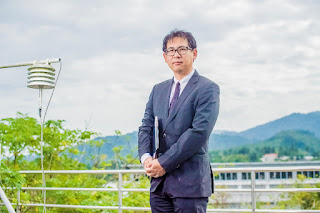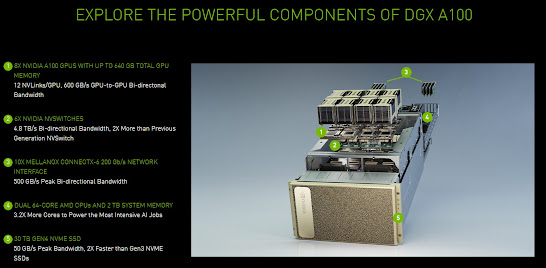First in Malaysia to Harness Power of Award-Winning AI Supercomputer
NVIDIA
today announced that University of Nottingham Malaysia (UNM) is the first in
the country to deploy the NVIDIA DGX A100 system to provide the high performance computing (HPC) performance
needed for artificial intelligence (AI) research, teaching and learning.
When the DGX system becomes operational
at the end of February, the university expects to see higher throughput and
increased efficiency for its research community of undergraduate and
post-graduate students, and academics.
UNM is one
of two campuses of the University of Nottingham in the UK, which was founded in
1881. Building on its rich, research-led heritage, it is heavily engaged in
research to address global challenges in a number of areas, all of which
require powerful computing resources. These efforts include AI and advanced
data analysis, and more specifically, computer vision, machine learning and
neural computation.
The
research groups UNM supports also focus on areas such as developing sustainable
societies, inclusion in the workplace, nanotechnology, and smart manufacturing.
Asia Research Institute Malaysia, Centre for Green Technologies, Future Food
Malaysia, and Institute for Aerospace Technology are among its other users.
UNM’s research
projects rely on modern AI techniques, particularly deep learning, and often
adopt simulation-based approaches in a large variety of application areas.
To address
the heavy computational demands of such activities, UNM is turning to NVIDIA
DGX A100, a universal system for all AI workloads with five petaflops of AI
performance for unprecedented compute density, performance and flexibility.
Using the system’s NVIDIA
Multi-Instance GPU
(graphic processing unit) technology, UNM will be able to flexibly allocate
computing capabilities across every AI workload, supporting individual
researchers to large teams.
Unique Levels of Flexibility for Use Cases
“The NVIDIA
DGX A100 is particularly attractive because it combines a large number of
powerful GPUs that can be reconfigured and combined in multiple ways depending
on user requirements,” said Tomas Maul, associate professor, Faculty of Science
and Engineering at UNM. “It offers unique levels of flexibility that can cater
to our wide spectrum of use cases, from researchers with heavy individual
workloads, to large classes of undergraduate students, each with smaller
workloads.”
The DGX A100 system will help UNM centralise its HPC/GPU solutions and offer more computing flexibility to its academics and students to further accelerate research outputs.
Furthering AI Capabilities
Data
science is now a core component of commercial industries and demand for skilled
data scientists is outstripping supply. Industries are leaning more and more on
universities to provide better skilled graduates.
NVIDIA DGX
A100 will be used to help further the AI capabilities of the university’s
research community through the NVIDIA
Deep Learning Institute, which provides hands-on self-learning tools to advance knowledge
in areas such as AI, accelerated computing, accelerated data science, graphics
and simulation.
“UNM provides
a very conducive environment for our research, which spans areas such as
scientific computation, fluid mechanics, AI and data analytics and which can
inform new ideas in urban planning, the environment and remote sensing. We have
had a lot of IT support, too, which is crucial given all the high-performance
computers used to conduct our research. This provides a productive environment
for us to work in,” said Professor Andy Chan, vice provost, Research and Knowledge
Exchange at UNM.
“Today’s problems are much more complex and require cross-domain expertise as well as very large datasets. AI is now a very fast-growing part of the workflow of traditional HPC research. With NVIDIA DGX A100, UNM’s research community will have the HPC power to drive their projects more efficiently for faster outcomes that make the world a better place,” said Dennis Ang, senior director of enterprise business for the SEA and ANZ region, Worldwide Field Operations, NVIDIA.









0 comments:
Post a Comment